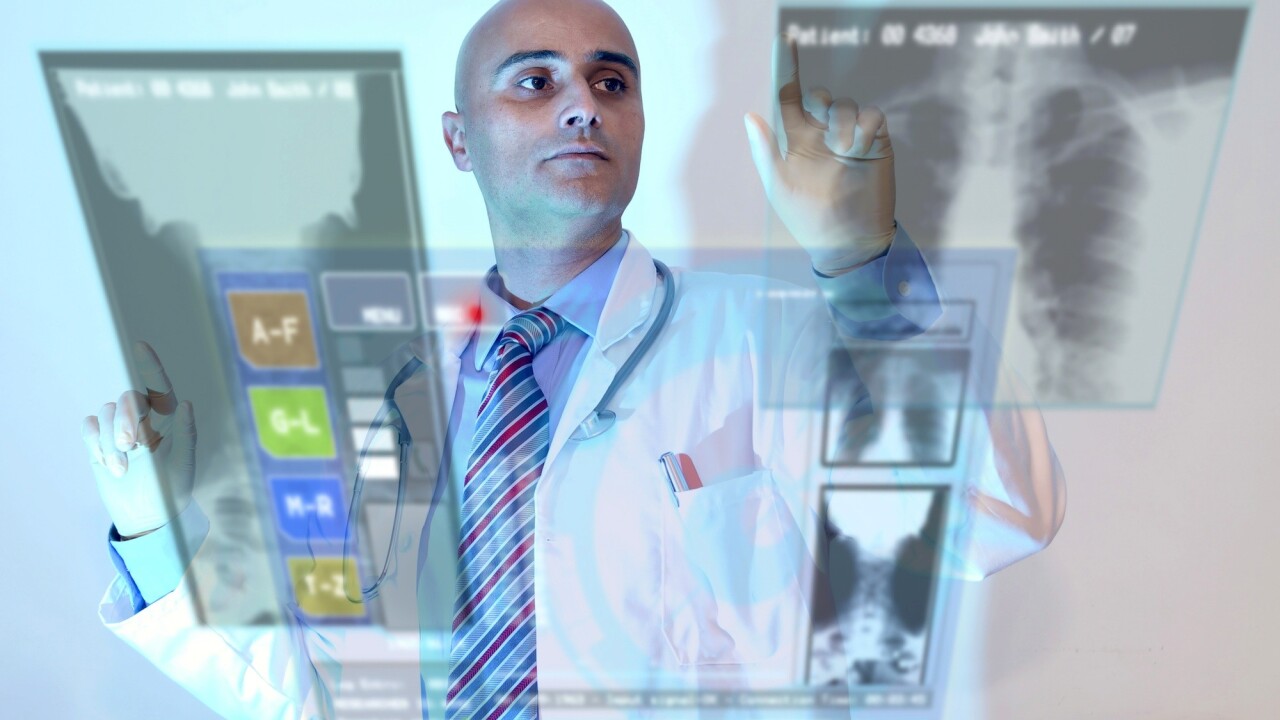
Helen Papagiannis is the Chief Innovation Officer of Infinity Augmented Reality, an AR software platform that universally connects with digital eyewear, smartphones and tablets, integrating multiple devices into one platform.
You walk in to the doctor’s office – nervous – thinking of the last time you received the injection of your monthly medication, remembering how painful and aggravating it was when the nurse couldn’t find your vein and poked you five different times to insert the IV.
This time, however, something is different. When the nurse shows up he is wearing a special pair of glasses, something you wouldn’t expect to see during such a standard procedure. The device uses advanced technology and shows the nurse a perfect highlighted image of your veins so he can insert the IV in one painless attempt.
Sounds like science fiction right? Wrong. This is a real device and is just one early example of how Augmented Reality (AR) technology is changing the healthcare landscape.
Research shows that up to 40 percent of IV sessions require multiple attempts to locate and access the vein. Augmented reality comes to the rescue in a standard procedure that still causes so much discomfort and dissatisfaction.
The revolution will be augmented
We’ve seen x-ray style vision in AR before, but unfortunately, only in gimmicky applications to no real human benefit. It’s still early in the game, but medicine is one of the industries that will be profoundly affected by the AR revolution.
Many companies are hard at work building new applications and new devices for healthcare providers, patients, and day to day users. AR technology presents massive lifesaving potential for the medical industry.
Typically, when people think of AR, they imagine glasses and screens that present new layers of content on top of real world images. This traditional model will still play a significant role in the future. However, there’s another aspect to AR that will be important, specifically in the healthcare industry and that is the ability to instantly display relevant information to people who need it most.
Imagine a doctor who is able to view a patient’s medical history displayed over the latest medical scan, and even over the patient himself. We are already beginning to see wearable medical devices that provide critical health information during relevant points of the day.
In the near future, the next time you want to bite into your hamburger, you might get a friendly reminder that your cholesterol level won’t like it.
Overcoming roadblocks with the help of the crowd
We are still facing significant barriers before we will be able to see AR’s full potential in action. Some of these barriers are practical, such as problems with Wi-Fi connectivity and battery life. Several of the barriers are conceptual, but we do see a huge shift in people’s mindsets.
Wearables will play a major role in this. For example, there have been several crowd-sourced campaigns to develop wearables that could sense your heart rate and blood oxygen levels and send you real-time notifications. In another case, there was an abdominal surgery that took place on one side of a city, and in parallel was live-streamed via glasses to a medical school class.
The right information to save lives
Medicine is one of the industries that provides tangible real-world benefits to help people live better lives, and AR can help immensely. When you’re dealing with life and death decisions, immediate access to necessary and relevant information is of the utmost importance.
This is where AR has the most potential to disrupt the industry – putting the information doctors and healthcare providers need in front of their eyes, when they need it. Beyond that, this same experience can be tailored for the needs of patients and everyday users unlocking the potential for a real revolution in health and in the way people think about maintaining their health.
Image credit: Luis Louro/Shutterstock
Get the TNW newsletter
Get the most important tech news in your inbox each week.





